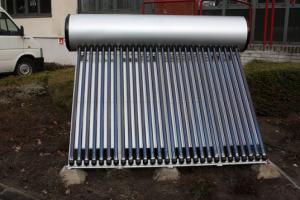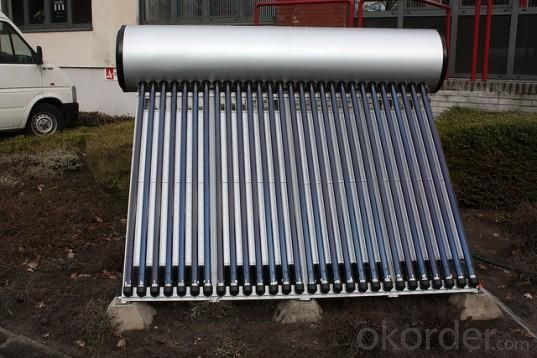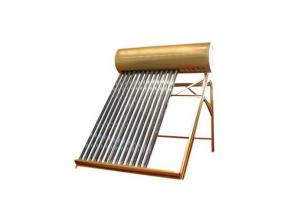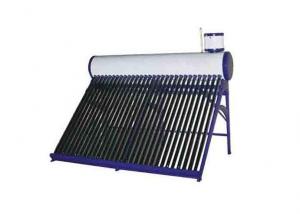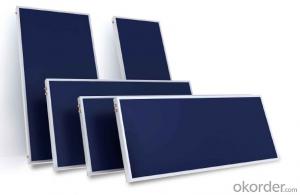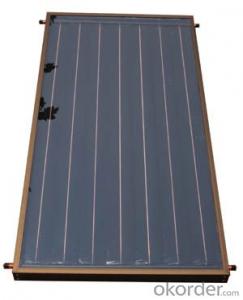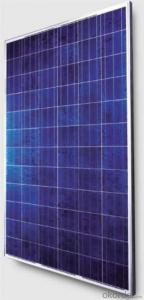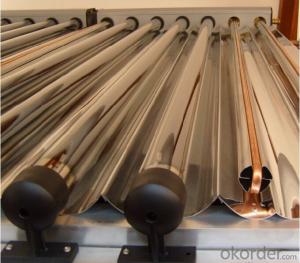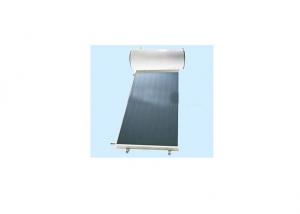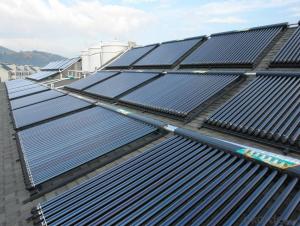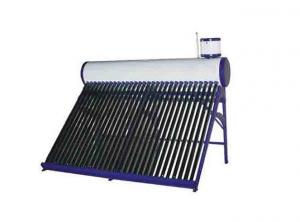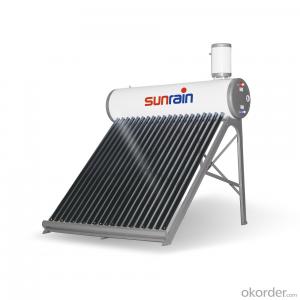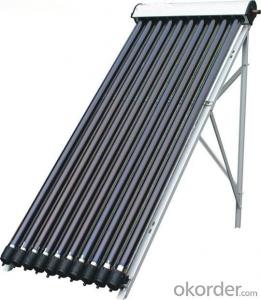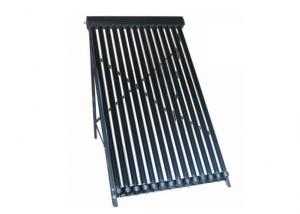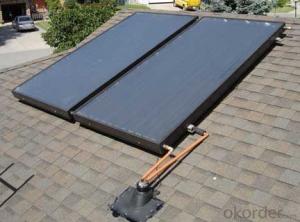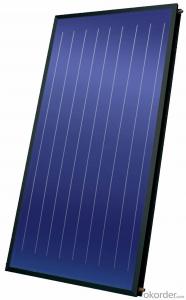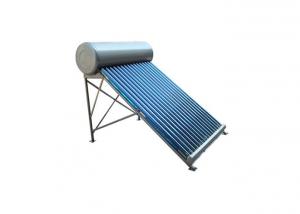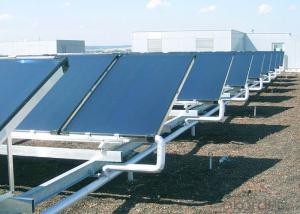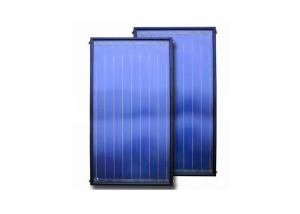Aquatherm Solar Collectors for House Heating
- Loading Port:
- China Main Port
- Payment Terms:
- TT or LC
- Min Order Qty:
- 1 Set watt
- Supply Capability:
- 3000 Sets per Month watt/month
OKorder Service Pledge
OKorder Financial Service
You Might Also Like
1.Modular design, arbitrary combination.
2.Harmony with the building perfectly.
3.Intelligent control and automatic operation.
ADVANTAGE OF SP-300L SYSTEM:
1st. Technically, plate heat exchanger have following features,
1. Compact structure and small volume. It is convenient to install and uninstall, by users, to clean it.
2. High hear transfer efficiency.
3. Durable and not easy scaling
4. High temperature and high pressure resistance.
5. Less liquid holdup, reduce refrigeration /water-filling/ heat transfer fluid impulse.
2ND. Good-looking.
We improved the system by compacting the pump station, expansion vessel and controller on the top of water tank. They improved as a complete unit. It takes small space to install, and looks wonderful.
3rd. More intelligent.
The controller is improved by adding another intelligent functions, for instance, the HOLIDAY FUNCTION, which can protect FREE-CSP system all the time, and which is easy to operate.
4th. More economic and easier to install.
There are mainly two parts in the FREE-CSP system, one is compacted water tank and there other is solar collectors. To install the system is as easy as combine the tank and solar collectors by pipes. In the feedback of each client from Europe, I've been told the installation cost is extremely high. The FREE-CSP system will cut off the expensive installation fees.
Tank
Capacity | Inner tank Thickness&diameter(mm) | Insulation layer (mm) | Outer tank Thickness&diameter&height |
100 | £1.2/Φ370 | 50 | £0.55/Φ470/h1110 |
150 | £1.2/Φ370 | 50 | £0.55/Φ470/h1520 |
200 | £1.5/Φ470 | 45 | £0.55/Φ560/h1320 |
250 | £1.5/Φ470 | 45 | £0.55/Φ560/h1620 |
300 | £1.5/Φ470 | 50 | £0.55/Φ560/h1870 |
400 | £2.0/Φ600 | 50 | £0.55/Φ700/h1630 |
500 | £2.0/Φ600 | 50 | £0.55/Φ700/h1920 |
Model
Capacity | Inner tank Thickness&diameter(mm) | Insulation layer (mm) | Outer tank Thickness&diameter&height |
100 | £1.2/Φ370 | 50 | £0.55/Φ470/h1110 |
150 | £1.2/Φ370 | 50 | £0.55/Φ470/h1520 |
200 | £1.5/Φ470 | 45 | £0.55/Φ560/h1320 |
250 | £1.5/Φ470 | 45 | £0.55/Φ560/h1620 |
300 | £1.5/Φ470 | 50 | £0.55/Φ560/h1870 |
400 | £2.0/Φ600 | 50 | £0.55/Φ700/h1630 |
500 | £2.0/Φ600 | 50 | £0.55/Φ700/h1920 |
Advantage:
1.Integrated with the building:collectors can combine with building prefect
2.Intelligent control and automatic
3.Work under high pressure: can operate with pressure up to 0.6Mpa. It can be installed at any position with high pressure, large flow rate, comfortable bathing.
4.There is no water in the tubes, so there is no scale, no breaking and can safely work under very low temperature
5.Heat pipe technology: it means that the collector can work at low temperature, quick heat transfer and high efficiency.
6.Each individual tube can work indepentently, and the whole system can still work if individual tube is damaged
- Q: Can solar collectors be used in natural gas power plants?
- Yes, solar collectors can be used in natural gas power plants. Solar energy can be integrated into natural gas power plants by using solar thermal technology. This involves the installation of solar collectors, also known as solar thermal panels, to capture the sun's heat and convert it into thermal energy. This thermal energy can then be used to generate steam, which drives a turbine and generates electricity. By incorporating solar collectors into natural gas power plants, the overall efficiency and environmental performance of the plant can be improved. The solar thermal system can supplement the natural gas combustion process, reducing the amount of fossil fuel required to generate electricity. This leads to a decrease in carbon emissions and reliance on non-renewable resources. By combining the intermittent nature of solar power with the consistent and controllable nature of natural gas, a hybrid power plant can be created that provides a more stable and reliable source of electricity. This allows for a smoother integration of renewable energy into the power grid. Moreover, the use of solar collectors in natural gas power plants can enhance the overall sustainability and resilience of the energy system. By diversifying the energy mix and incorporating renewable energy sources, the dependence on fossil fuels can be reduced and the power generation can become more environmentally friendly. In summary, solar collectors can be effectively used in natural gas power plants to harness solar energy and improve the overall efficiency, environmental performance, and sustainability of the plant.
- Q: Can solar collectors be integrated into existing buildings?
- Yes, solar collectors can be integrated into existing buildings. They can be installed on rooftops or walls, depending on the available space and orientation. Retrofitting solar collectors onto existing buildings is a viable option to harness solar energy and reduce reliance on traditional energy sources.
- Q: How do solar collectors impact the value of a property?
- Solar collectors can significantly increase the value of a property by reducing energy costs, providing a sustainable energy source, and contributing to a greener and more efficient home.
- Q: Can solar collectors be used in combination with wastewater treatment systems?
- Solar collectors have the capability to be utilized alongside wastewater treatment systems. These devices, also referred to as solar panels or solar thermal systems, are specifically designed to convert sunlight into usable heat energy. Such heat energy can serve various purposes, including the heating of water for wastewater treatment systems. The operation of wastewater treatment systems typically demands a substantial amount of energy, particularly for activities such as water heating, aeration, and pumping. By incorporating solar collectors into these systems, the thermal energy generated by the sun can be effectively utilized to meet a portion of the energy requirements for the wastewater treatment process. The utilization of solar collectors can involve the heating of water required for different stages of the treatment process. For instance, during the primary treatment stage, solar collectors are capable of heating the incoming wastewater, thereby facilitating the breakdown of organic matter and the separation of solids. In the secondary treatment stage, solar thermal systems can provide the necessary energy for aeration, thus promoting the growth of beneficial bacteria that degrade pollutants in the wastewater. Moreover, solar collectors can be employed to generate electricity, which can be utilized to power pumps and other equipment utilized in wastewater treatment systems. This approach helps decrease dependence on electricity from the grid and can contribute to lower operational expenses and a reduced environmental impact. Overall, the integration of solar collectors with wastewater treatment systems presents a sustainable and renewable energy solution. This integration aids in reducing the carbon footprint of the treatment process, lowering operational costs, and enhancing the overall efficiency of the system.
- Q: Can solar collectors be used in areas with high levels of air pollution?
- Yes, solar collectors can be used in areas with high levels of air pollution. While air pollution may reduce the efficiency of solar collectors to some extent, they can still function and generate electricity or heat. Regular cleaning and maintenance of the collectors may be required to prevent the buildup of pollution particles on the surface, which can hinder their performance. However, it is important to note that the overall effectiveness of solar collectors in polluted areas may be lower compared to areas with cleaner air.
- Q: What is the effect of saltwater exposure on solar collectors?
- Saltwater exposure can have a detrimental effect on solar collectors. The corrosive nature of saltwater can cause damage to the surface coatings and materials used in solar collectors, leading to reduced efficiency and potential system failure over time. Regular maintenance and protective measures are necessary to mitigate the negative impact of saltwater exposure on solar collectors.
- Q: Can solar collectors be used in areas with limited technical support?
- Yes, solar collectors can be used in areas with limited technical support. Solar collectors are relatively simple and robust systems that do not require extensive technical expertise for installation and operation. With proper training and basic knowledge, local communities can easily maintain and repair solar collectors. Additionally, advancements in solar technology have made systems more efficient, reliable, and user-friendly, further reducing the need for technical support.
- Q: Can solar collectors be used in recycling plants?
- Yes, solar collectors can be used in recycling plants. They can provide renewable energy to power various processes and equipment, reducing the reliance on traditional energy sources and minimizing the carbon footprint of the plant. Additionally, solar collectors can help offset the energy consumption of recycling facilities, making them more sustainable and environmentally friendly.
- Q: Can solar collectors be used in vehicles?
- Yes, solar collectors can be used in vehicles. They can be integrated into the design of vehicles to generate electricity from sunlight, which can be used to power various components such as lights, air conditioning, and even the vehicle's propulsion system. Solar-powered vehicles are considered more environmentally friendly and can help reduce dependency on fossil fuels. However, the efficiency and practicality of solar collectors in vehicles depend on factors like the available surface area, location, and weather conditions.
- Q: How do solar collectors impact social equity?
- Solar collectors can have a positive impact on social equity by providing affordable and sustainable energy solutions to communities that may not have access to reliable electricity. They can help reduce energy costs, create job opportunities, and improve the overall quality of life for individuals in underserved areas. Additionally, solar collectors can contribute to reducing carbon emissions and addressing climate change, benefiting everyone regardless of their socio-economic status.
1. Manufacturer Overview
| Location | Zhejiang, China |
| Year Established | 2004 |
| Annual Output Value | US$10 Million - US$50 Million |
| Main Markets | North America South America Eastern Europe Southeast Asia Africa Oceania Mid East Eastern Asia Western Europe |
| Company Certifications | ISO 9001:2000 ;CE ;Solar Keymark |
2. Manufacturer Certificates
| a) Certification Name | |
| Range | |
| Reference | |
| Validity Period |
3. Manufacturer Capability
| a) Trade Capacity | |
| Nearest Port | Shanghai,Ningbo |
| Export Percentage | 51% - 60% |
| No.of Employees in Trade Department | 6-10 People |
| Language Spoken: | English, Chinese |
| b) Factory Information | |
| Factory Size: | 10,000-30,000 square meters |
| No. of Production Lines | Above 10 |
| Contract Manufacturing | OEM Service Offered Design Service Offered Buyer Label Offered |
| Product Price Range | Average |
Send your message to us
Aquatherm Solar Collectors for House Heating
- Loading Port:
- China Main Port
- Payment Terms:
- TT or LC
- Min Order Qty:
- 1 Set watt
- Supply Capability:
- 3000 Sets per Month watt/month
OKorder Service Pledge
OKorder Financial Service
Similar products
Hot products
Hot Searches
Related keywords
